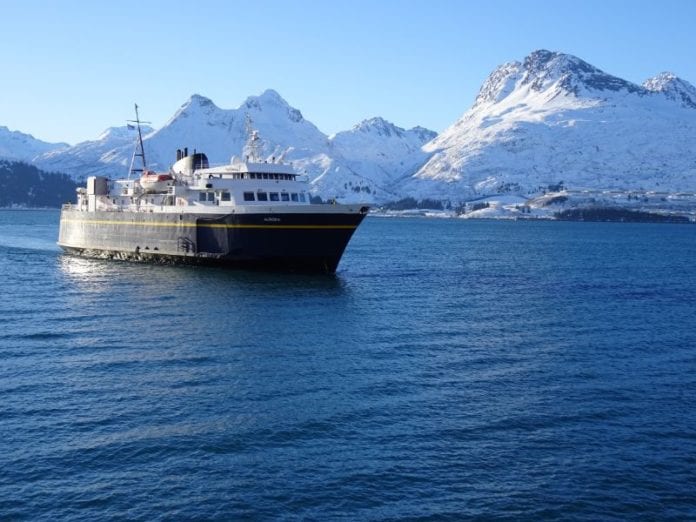
In a packed hearing at the Cordova Civic Center on Saturday, July 27, 2019, the outpouring of protests over cuts in ferry service was loud and clear.
State Representatives Louise Stutes, Adam Wool, and Harriet Drummond, as well as other legislators and state officials participating via teleconference in Juneau, listened for three and a half hours as Cordovans pleaded passionately for restoration of service in a schedule that would mean no ferry here for over eight months, beginning in mid-September 2019, through mid-May, 2010.
The hearing was unique. Over 200 denizens were present, and for the first time in local history, everyone agreed.
Normally Cordovans seem to be divided 50-50 on issues. Think of the historic road vs no road debate (given the vagaries of the Copper River, aren’t we lucky that one ended as it did?), the Civic Center construction (some still call it the Taj Mahal) or the famous dogs vs trapping controversy (held midwinter in the steamy, cramped confines of the old library meeting room).
Not this time. The unity was resounding.
Yet, painfully, was it enough? Can the outcry from an isolated small fishing town located on the edge of Prince William Sound really matter when Anchorage (population 300,000) and the MatSu Valley (population 100,000) dominate the political landscape with over half the state’s population?
Former Cordova Mayor Kelly Weaverling testified late in the hearing, and was not optimistic, although he did raise one telling point: “I see over 200 people here, which is roughly 10 percent of Cordova’s population. Imagine if 10 percent of Anchorage’s population showed up at a hearing like this -that would be 30,000 people. Maybe then those supporting these cuts and vetoes would listen.”
“But that’s not likely”, he added.
While there have been protests in Anchorage and packed houses at hearings in the “Big A”, not even the Sullivan Arena or the Alaska Airlines Center (a beautiful arena on the UAA campus that may sit idle this winter if the axe falls on all college sports programs due to university budget cuts) could hold even a small part of a 10 percent crowd.
Yet Weaverling’s 10 percent may be a magic number.
Consider this numerical maze.
The state constitution requires a 75 percent vote by legislators (in this case, 45 out of 60) to override the Governor’s line-item budget vetoes, which, by the way, is the highest of any state in the Union.
A small block of legislators, mainly from the MatSu Valley, have created a unique system of democracy in which a 25 percent minority rules, holding the power to prevent overturning these vetoes and passage of a budget that restores most of these cuts.
Recollect that such a budget was originally approved by the majority of the legislators after hearings all over Alaska resulted in their bravest effort ever to represent the best interests of the state.
But back to that 10 percent.
Along with defining the veto process, the state constitution also describes a recall procedure to remove the governor, lieutenant governor, or members of the state Legislature from office, and the first step requires signatures from 10 percent of the voters in the last election.
In the recent statewide election, 646 Cordovans cast votes. (Incidentally, Mark Begich received 415, Mike Dunleavy 197.)
That means 65 Cordovans would have to sign the petition. Based on the testimony at the hearing, that would seem a sure thing.
Statewide, 283,134 ballots were cast. Which translates to 28,313 signatures. That may be a challenge, but already, recall movements are underway across the state.
Of course, over 50 percent would eventually have to vote in favor of recall during the actual ballot.
Hmmm. Isn’t that called Majority Rules?
Lest recall seem extreme, consider statements by Governor Dunleavy indicating this is only phase one of budget cuts, with more to come next year.
Yippee. The dust will have barely settled on this extended Legislative session, and we’ll be right back at it again.
While most Alaskans agree there is always a need to seek economies in the budget at every level, the “crisis” in fact is a crisis in leadership, manufactured by promises of big PFD’s, no taxes, and unwillingness to compromise.
There seems only one way to change that.
Fairy tales always involve hopes, villains, and usually a happy ending.
This Math Ferry Tale could start with 25 percent, drop to 10 percent, and then rise to over 50 percent, the magic number – of democracy.














